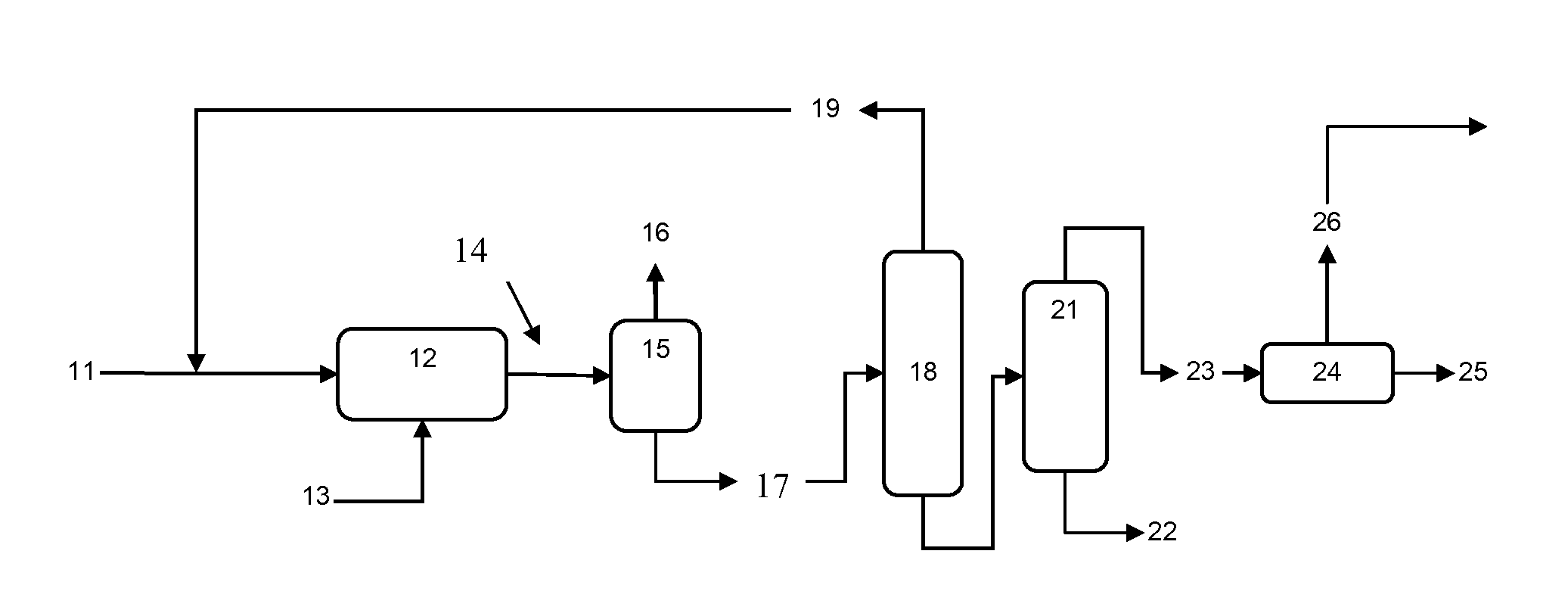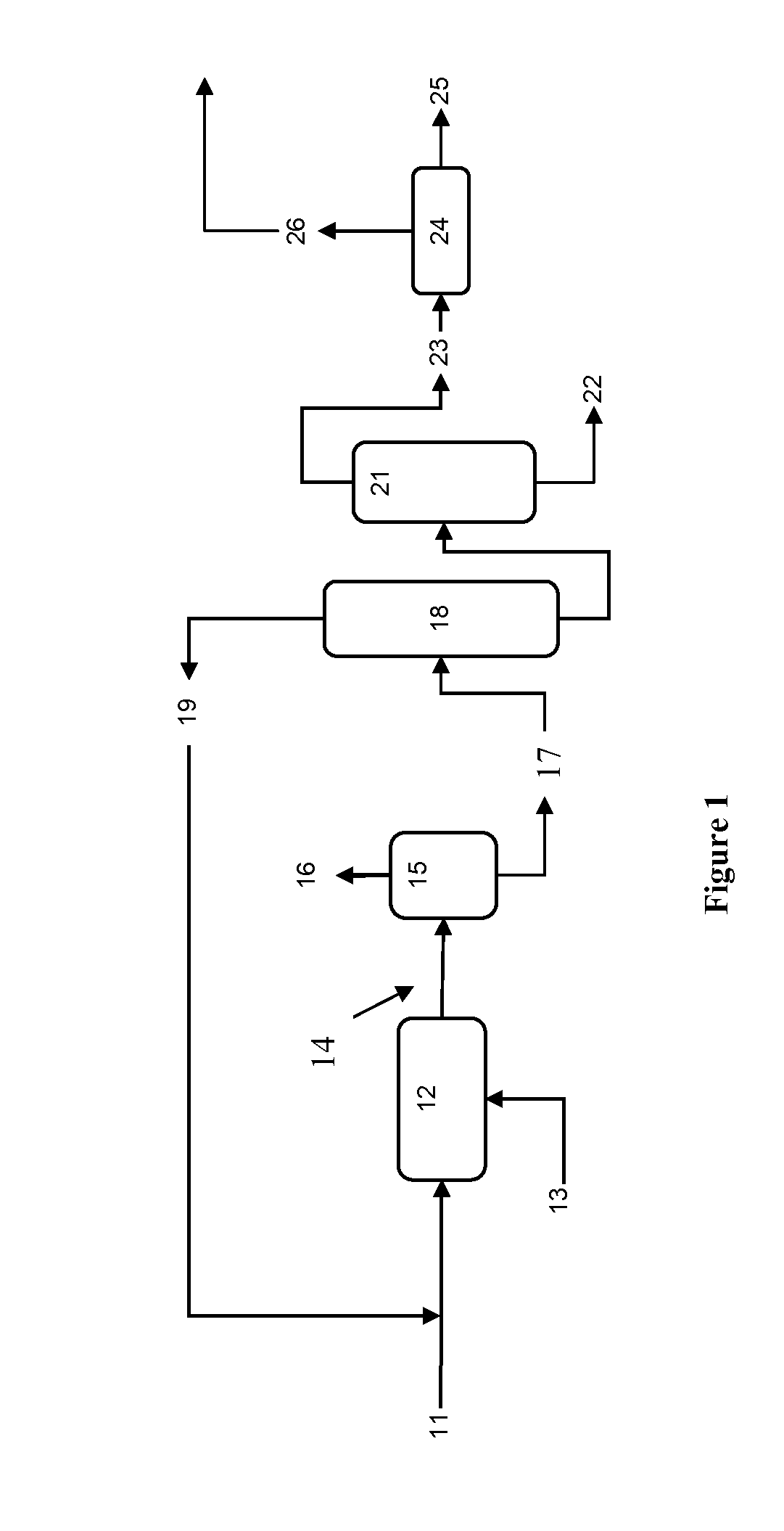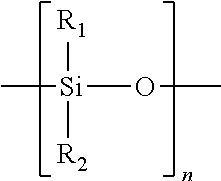Process for the Production of Xylenes and Light Olefins
a technology of xylenes and light olefins, applied in the direction of hydrocarbon oil treatment products, thermal non-catalytic cracking, treatment with alkylation, etc., can solve the problem of high price of hsub>2 /sub>
- Summary
- Abstract
- Description
- Claims
- Application Information
AI Technical Summary
Benefits of technology
Problems solved by technology
Method used
Image
Examples
example 1
[0091]This Example provides the estimated results of employing the process shown in FIG. 1 to upgrade 1831 kta of a C4 to C8 steam cracked feed having the composition shown in Table 2 below. 523 kta of methanol was supplied to the DTCAM reactor 12. The C3− olefin by-product recovered via line 16 was composed of 384 kta of ethylene, 605 kta propylene, and 68 kta of saturates. The amount of para-xylene product recovered via line 25 was 916 kta. The amount of mixed-xylene byproduct recovered via line 26 was 266 kta.
TABLE 2SpeciesktaC4 diolefins260C4 olefins302C4 saturates27C5 cyclo-diolefins96C5 diolefins109C5 cyclo-olefins19C5 cyclo sat's0.6C5 olefins (other)66C5 saturates (other)26C6 cyclodiolefins40C6 cyclo-olefins8.6C6 cyclo-olefins50C6 olefins (other)23C6 saturates (other)19Benzene270C7 olefins60C7 saturates40Toluene192C8 olefins27C8 saturates24Ethylbenzene81Xylenes (mixed)91
example 2
[0092]This example shows that a mixture of benzene and toluene can be alkylated with methanol to produce xylenes, especially para-xylene. The catalyst comprised 10 wt % ZSM-5 zeolite having a SiO2 / Al2O3 molar ratio of 450 and containing 2.9 wt % phosphorous, wherein the catalyst was bound with clay and had been steamed for 0.75 hours at 1025° C. under 1 atmosphere of steam. The catalyst had median particle size of 66 μm and was loaded into a ⅜″ external diameter quartz reactor. The feed streams included (1) a stream of a mixture of 50 mol % toluene and 50 mol % benzene; (2) methanol; and (3) steam. The aromatics to methanol molar (or weight) ratio was 4:3 and the hydrocarbon to steam molar ratio was 1:2. The reaction was conducted at 590° C., 35 psia, and 8 WHSV. Test results are presented in Table 3. It will be seen that the xylenes yield was 31.8%, of which 98.5% was para-xylene. Benzene conversion was 37.6% and toluene conversion was 8.5%.
example 3
[0093]This example shows that a mixture of ethylbenzene and toluene can be reacted with methanol to produce xylenes, especially para-xylene. The catalyst comprised 10 wt % ZSM-5 zeolite having a SiO2 / Al2O3 molar ratio of 450 and containing 2.9 wt % phosphorous, wherein the catalyst was bound with clay and had been steamed for 0.75 hours at 1025° C. under 1 atmosphere of steam. The catalyst had median particle size of 66 μm and was loaded into a ⅜″ external diameter quartz reactor. The feed streams included (1) a stream of a mixture of 50 mol % toluene and 50 mol % ethylbenzene; (2) methanol; and (3) steam. The aromatics to methanol molar ratio was 2:1 and the hydrocarbon to steam molar ratio was 1:2. The reaction was conducted at 590° C., 35 psia, and 2 WHSV. Test results are presented in Table 4. It will be seen that the xylenes yield was 20.2%, of which 94.8% was para-xylene. Ethylbenzene conversion was 61.2% and toluene conversion was 14.1%.
TABLE 4Ethylbenzene:Toluene (mol)1:1(Et...
PUM
| Property | Measurement | Unit |
|---|---|---|
| temperature | aaaaa | aaaaa |
| temperature | aaaaa | aaaaa |
| boiling points | aaaaa | aaaaa |
Abstract
Description
Claims
Application Information
 Login to View More
Login to View More - R&D
- Intellectual Property
- Life Sciences
- Materials
- Tech Scout
- Unparalleled Data Quality
- Higher Quality Content
- 60% Fewer Hallucinations
Browse by: Latest US Patents, China's latest patents, Technical Efficacy Thesaurus, Application Domain, Technology Topic, Popular Technical Reports.
© 2025 PatSnap. All rights reserved.Legal|Privacy policy|Modern Slavery Act Transparency Statement|Sitemap|About US| Contact US: help@patsnap.com



